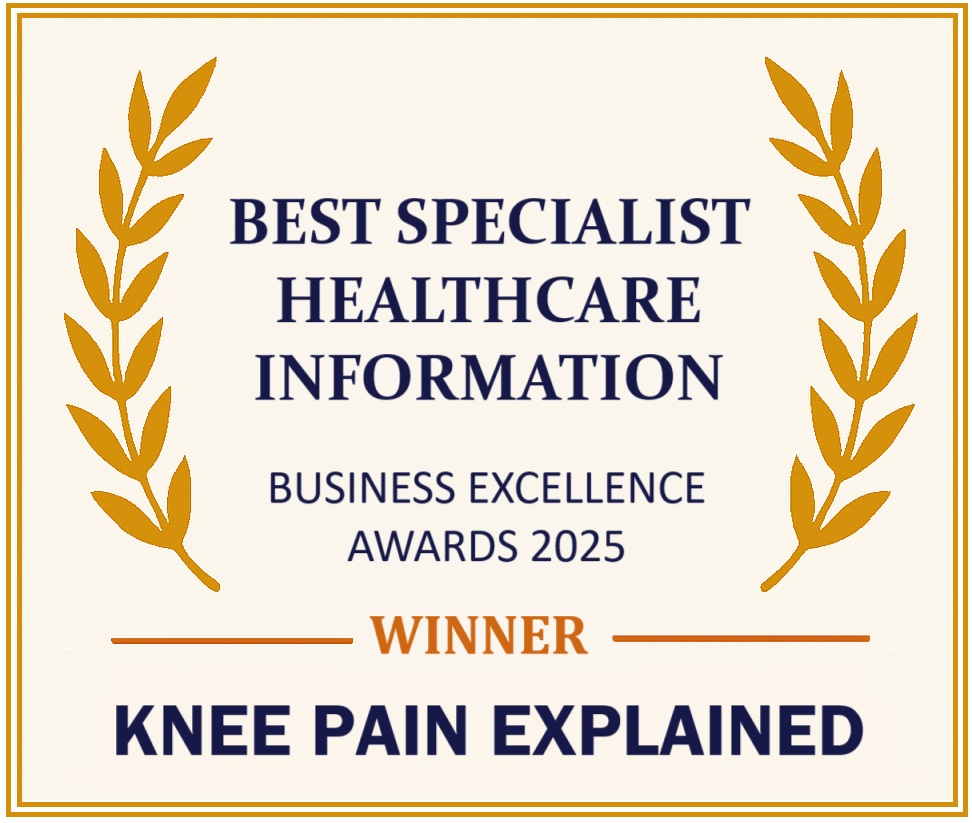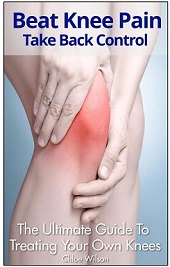Beat Knee Pain
Written By: Chloe Wilson, BSc(Hons) Physiotherapy
Reviewed by: KPE Medical Review Board
Knee pain is a really common problem ranging from short-term injuries e.g. ligament tears, to chronic conditions e.g. arthritis.
It often affects day-to-day life and may be associated with problems such as weakness, instability, swelling, clicking and reduced movement.
Many cases of knee pain can be treated at home, some may benefit from rehab and more severe cases may require surgery.
1. Knee Pain Diagnosis
The first step with any new knee problem is to work out what is causing the pain. Thinking about the location of your knee pain and any associated symptoms is a great place to start. You may have:
- Anterior Knee Pain: pain at the front of the knee or around the kneecap
- Posterior Knee Pain: pain behind the knee
- Lateral Knee Pain: pain on the outer side of the knee
- Medial Knee Pain: pain on the inner side of the knee
- Superior Knee Pain: pain above the knee
- Inferior Knee Pain: pain below the knee
- Calf Pain: pain below the back of the knee
- Hip Pain: pain in and around the hip joint
In the knee pain diagnosis section, we help you to work out what is causing your pain and the best ways to treat it.
2. Common Knee Injuries
Knee pain often develops suddenly due to an injury such as a fall, sporting tackle, accident or blow to the knee. Symptoms may develop immediately or build-up over 24-48 hours and knee movement is often affected.
Damage to any of the structures in and around the joint can cause knee pain, from ligament sprains to cartilage tears, muscle strains to broken bones.
Find out more in the Common Knee Injuries section.
3. Common Knee Conditions
Knee pain may also come on gradually over time, often with no obvious cause. Repetitive actions such as running, jumping or kicking can cause inflammation and degeneration, or altered biomechanics may change the way the forces go through your knee putting extra strain on certain structures.
There may be problems with the soft tissues such as tendonitis or bursitis, bones such as osteophytes and bone spurs or general wear and tear such as knee arthritis.
Find out more in the Common Causes Of Knee Pain section.
4. Common Knee Symptoms
Knee pain may present with a whole range of symptoms such as:
- Popping: clicking or grinding noises
- Locking: where the knee gets stuck
- Difficulty With Stairs: getting up or down (or both!)
- Problems At Night: which may affect your sleep
- Difficulty With Running: bending, sitting or squatting
- Swelling: anywhere around the knee
- Strange Sensations: such as instability, burning, stabbing or sharp knee pain
You can find out more about these and other problems in the Common Knee Symptoms section.
5. Knee Pain Treatment
There are lots of different treatment options when it comes to knee pain, depending on what is causing the problem. Knee pain treatment tends to fall into three different groups:
- Home Treatments: such as rest, ice, compression sleeves, knee braces, medication and activity modification
- Rehab: exercises to improve muscle strength, length, endurance and control
- Intervention: treatment from your doctor or physical therapist e.g. injections, manual therapy, acupuncture or electrotherapy
- Surgery: for more serious conditions, such as keyhole surgery or knee replacements
Find out more in the Knee Pain Treatment section.
6. Knee Pain Exercises
Rehab exercises are a vital part of the recovery process with virtually any cause of knee pain.
Muscles get weak and stiff extremely quickly and one of the most common reasons for ongoing problems after knee problems is not regaining full strength and function in the muscles.
There is a huge range of knee exercises that can help including:
- Strengthening Exercises: to improve strength and endurance
- Stretches: to improve length and flexibility
- Stability Exercises: to improve control e.g. VMO
- Resistance Band Exercises: can make exercises easier or harder depending on how you use them, great fun, cheap and versatile
Find out all about the best exercises whether you are a beginner, intermediate or advances in the Knee Pain Exercises section, as well as loads of top tips.
7. Knee Braces
People with ongoing knee pain, instability or more serious injuries often benefit from wearing knee brace to support the knee and reduce the weight going through the joint.
There are a huge range of knee braces on the market ranging from simple pull-up sleeves to high-tech hinged knee braces depending on what you need.
In the knee braces section we look at all the different styles, brands, support levels and types of knee brace and help you find the best one for you.
8. Knee Surgery
More serious causes of knee pain, or those persistent cases that just won't respond to conservative treatment may require surgery.
Often knee surgery can be performed arthroscopically (keyhole surgery) so the recovery process is quite quick, but that is not always possible, particularly for more complex surgery such as knee replacements.
You can find out all about the different types of surgery, including the indications, what happens during surgery and the recovery processes in the Surgical Knee Operation section.
9. Knee Joint Anatomy
Understanding what is going on in and around the joint can be really helpful with knee pain.
The knee is controlled by a complex system of ligaments, tendons, soft tissues, bones and muscles which all work together. Each of these structures are prone to different problems.
You can find out all about the different structures, how they fit together and work and what can go wrong in the Knee Joint Anatomy section.
10. Knee Arthritis
Knee arthritis is an increasingly common cause of knee pain, affecting 46% of people in their lifetime. It is the most common cause of knee pain in people over the age of 60 and is only increasing in prevalence.
There are lots of different types of knee arthritis, many progressing through different stages each with different symptoms.
We have a whole section dedicated to knee arthritis where you can find out all about the different types
- Common Causes
- Symptoms & Diagnosis
- Stages Of Arthritis: and how it progresses
- Treatment Options: exercises, braces, injections etc
- Dietary Advice: foods that help and those to avoid
- Natural Arthritis Remedies: including supplements, homeopathy and alternative therapies
- Surgical Options: including partial and total knee replacements
Find out more in the Knee Arthritis section.
When Should You See A Doctor?
Most cases of knee pain will settle down with time and simple treatment, but often it is worth getting checked out by a doctor.
See Your Regular Doctor If:
- You have moderate knee pain
- The knee pain is there all the time
- Your knee is regularly giving way
- Your knee locks - gets stuck
- Your knee symptoms have suddenly got worse
- You have a high temperature with your knee pain
- You notice that your lymph nodes are swollen e.g. in the neck or groin as this can be a sign of an infection
- There is no improvement in your symptoms after a week
Seek Urgent Medical Attention If:
- You have severe knee pain
- You heard a cracking or popping noise when you injured your knee
- There is severe knee swelling and bruising
- Your knee looks an awkward shape
- You are unable to bear weight on your leg
- You notice any changes in your bladder or bowel
- You lose sensation in one or both feet
- You experience unexplained weight-loss
Where Should I Start?
Not only do we want to help you abolish the pain, we also want to help you to make sure that it doesn't come back again in the future. So not only do we look at how to treat the problem, we also help you work out what caused it in the first place so you can address that too, in an easy to understand and follow way - no confusing jargon!
Each section above contains in-depth information on each topic and will guide you through all the different aspects of knee problems.
Choose from the sections above or use the navigation bar to find out more about knee pain and how you can beat it. If you can’t find something you are looking for, please visit the Site Map.
If your pain is further down your leg, visit foot-pain-explored.com, our sister site which covers all aspects of ankle, foot and toe problems. We also have another site dedicated to shoulder, arm, elbow, wrist and hand problems, shoulder-pain-explained.com.
Please be aware that all the information on knee-pain-explained.com is intended for general education purposes only.
Nothing that you read on this site should delay you from seeking professional medical advice or substitute any advice, diagnosis or treatment that you have been given or recommended by your health professional - please see our terms and conditions before proceeding.
Last Updated: December 4th, 2025
Next Review Due: December 4th, 2027


